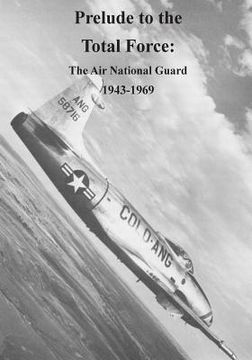Reseña del libro "Prelude to the Total Force: The Air National Guard 1943-1969 (en Inglés)"
In this study of the origins and evolution of the Air National Guard, Dr. Charles. Gross, himself a former guardsman and a professional historian, currently at the Air Force Systems Command History Office, chronicles this transformation. In the 1940s, the active duty Air Force was not particularly sympathetic or supportive of an Air National Guard. Focused on creating an Air Force as a separate service, carving out its role in the air-atomic age, and changing from piston to jet engines in an austere budgetary environment, the regulars saw no real purpose for part-time, state air forces. If anything, an Air Guard threatened thefunding of an adequate regular force. Given the Guard's record of poor readiness and its successful resistance to direction from Washington, the Air Force leadership would have been just as happy to see the Guard eliminated.In 1950, the difficult and in many respects unsuccessful mobilization of the Air National Guard for the Korean War, forced the Air Force into reforms, and the Guard itself to accept greater peacetime control by the active force. Through the 1950s, by means of expansion, more modern aircraft, and more closely coordinatedplanning and policy-making, the Guard began to increase both in effectiveness and in the respect it engendered from the Air Force leadership. Late in the decade, increased budgetary pressure on the Air Force, combined with the Eisenhower administration's emphasis on reserves and the Congress' support for the Guard, led to a more favorable view of the Guard by the Air Force. Also, Air Guard leaders themselves realized that they had to institute various reforms and better integrate the Guard with the regular force. Most importantly, the Guard in the 1950s won for itself, in continental air defense, in tactical aviation, and in airlift, meaningful missions that it could perform effectively on a continuing basis in peacetime. In mobilizations during the Berlin crisis in 1961-1962, in the Pueblo crisis and the Southeast Asian War in 1968, the Guard proved its competence and excellence.The expanding role of the Guard and its close cooperation with the Air Force are Dr. Gross' themes, explaining the rise of the Guard to the prominence it plays in today's air operations. He pulls no punches in recounting the conflict betweenGuard and regular Air Force, or in explaining how each side maneuvered to safeguard its interests. However, the author also shows how common concerns and mutual dedication to the national defense overcame parochialism and led fromcooperation to integration. The result was displayed for all the Air Force to see in the professionalism of Guard units in the 1960s mobilizations. Guard and regular Air Force had become vital to each other; in return for modern aircraft, a substantial peacetime mission, and upon mobilization integration into the wartimeforce, the Guard accepted de facto control by the regular Air Force. As Dr. Gross concludes, the concept of "state militia" was altered far beyond the changes wrought earlier in federal-state military relations. The Air Guard was ready for the'Total Force" policy of the 1970s. The dilemma of maintaining a reserve fully capable of fighting the air war was solved. By the 1980s, the Air National Guard, at the same time inheritors of a military tradition extending back before 1776, and users of the most advanced technologies of war, could prove that citizen-soldiers need not be second to any airman in the world

